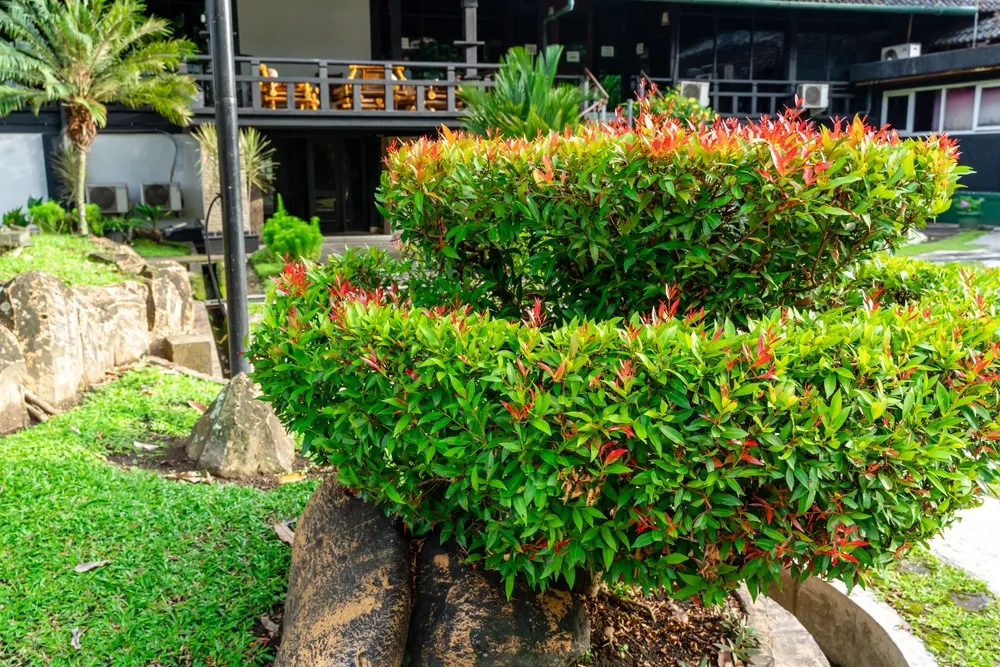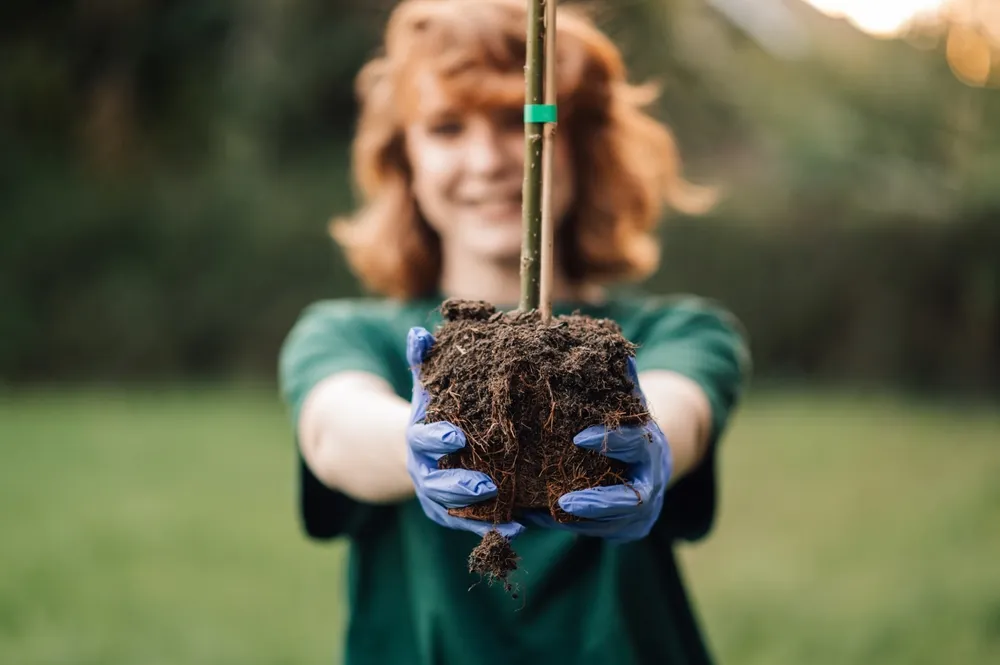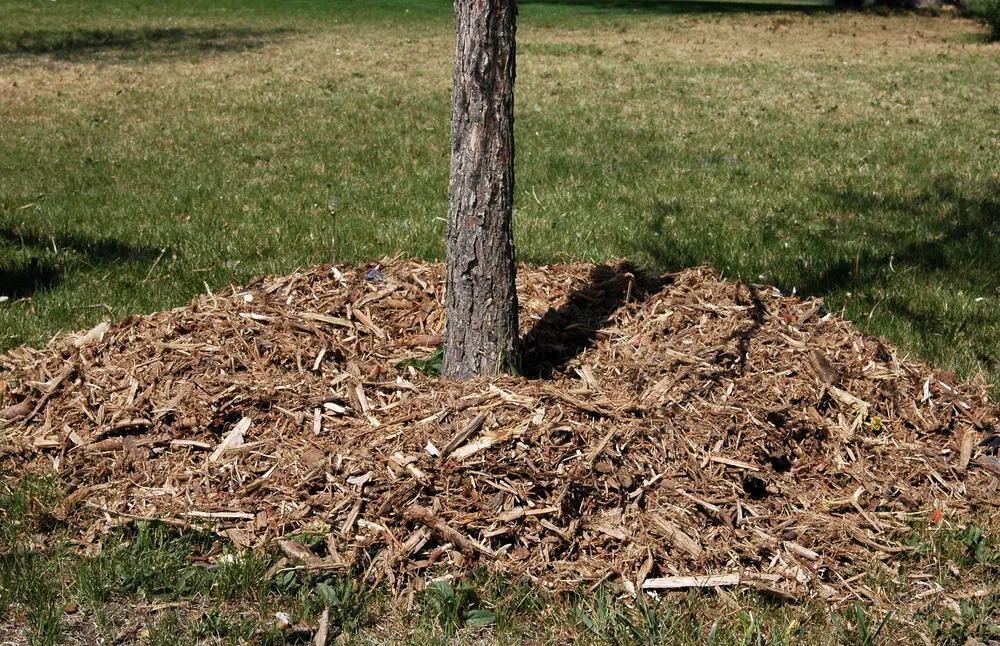Choosing the perfect tree for your garden is both an art and a science, one that can completely reshape how your outdoor space looks and feels. At North Shore Tree Services, we’ve seen courtyards turn into green sanctuaries and streetscapes come alive simply by picking the right species. The key isn’t just beauty; it’s knowing your soil, your goals and how each tree will grow with you over time.
From comparing native and exotic species to understanding growth patterns and maintenance needs, here’s how to make informed and lasting choices for your garden. Let’s get started!

Understanding Native and Exotic Tree Choices
Sydney’s temperate climate supports an incredible range of trees, but not all are equally suited to every environment. Deciding between native and exotic species sets the foundation for the garden’s overall health and resilience. This choice affects water consumption, soil balance and even how local wildlife interacts with your outdoor space.
Native Trees: Local Strength and Sustainability
Native trees are perfectly adapted to local conditions and play a role in maintaining healthy ecosystems. Unlike imported species, they require less watering, resist local pests and perform well in the region's natural rainfall patterns. By planting natives, you’re enhancing your garden and helping preserve biodiversity. Advantages include:
- Better drought and pest resistance
- Support for native birds and pollinators
- Lower maintenance once established
Popular Sydney native trees:
- Lilly Pilly (Syzygium smithii): Ideal for hedging and screening
- Banksia integrifolia: Tolerates coastal conditions and poor soils
- Eucalyptus species: Provide shade aroma and attract wildlife
Exotic Trees: Aesthetic and Functional Variety
Exotic trees bring striking colour and seasonal interest. They can complement modern or heritage homes and introduce fragrances not found in native flora. However, choosing exotics requires balance; selecting non-invasive species that can handle a unique climate is key to long-term success. Examples include:
- Japanese Maple (Acer palmatum): Elegant foliage and brilliant autumn colours
- Crepe Myrtle (Lagerstroemia indica): Offers vivid blooms and textured bark
- Jacaranda (Jacaranda mimosifolia): Creates breathtaking purple canopies each spring
Tip: Pair native resilience with the charm of exotics for a diverse and visually stunning garden, but always confirm with your council that the species is suitable for your suburb.
Matching Trees to Purpose: Shade, Privacy and Wildlife
Before you start planting, think about what you want your trees to do. Are you dreaming of cool shade over your patio, a natural screen from neighbours or a garden alive with birds and butterflies? Once you know your purpose, the right tree choice becomes clear. Trees do more than fill space; they cool your home, clean the air and turn a plain yard into a relaxing retreat.
Shade Trees
Shade trees do more than cool the air; they make outdoor areas usable and comfortable. They also protect soil from drying out and can lower surrounding temperatures by several degrees. They also improve soil moisture retention by shielding it from direct sunlight and their broad canopies can lower ambient temperatures by several degrees. Choosing the right shade tree can transform a bare yard into a comfortable retreat. The best choices are the following:
- Eucalyptus microcorys (Tallowwood): Strong and fast-growing, ideal for large gardens
- Tristaniopsis laurina (Water Gum): Compact, low-litter option for driveways and patios
- Liquidambar styraciflua (Sweetgum): Known for its stunning autumn foliage
Privacy and Screening
Privacy trees serve as living walls that reduce visibility, absorb noise and provide wind protection. In urban Sydney, planting the right species can create a sense of seclusion without fencing. Consider height, density and maintenance level to achieve the right balance between coverage and aesthetics. Your top picks are:
- Lilly Pilly (Syzygium) varieties: Dense evergreen growth ideal for hedging
- Photinia robusta: Decorative foliage and reliable screening
- Camphor Laurel (Cinnamomum camphora): Vigourous grower, but should be used cautiously
Wildlife and Biodiversity
Wildlife-friendly trees bring movement and life to your garden, inviting birds, bees and butterflies to visit and nest. These trees often produce nectar or seeds that sustain local fauna throughout the year. Beyond beauty, they help restore natural habitats, especially in suburban environments. Consider planting:
- Grevillea species: Year-round blooms that attract honeyeaters
- Melaleuca quinquenervia (Paperbark): Great for water-tolerant areas
- Callistemon (Bottlebrush): Iconic red flowers and strong wildlife appeal
Pro Tip: Mix species that flower and fruit at different times so your garden remains lively throughout the year.
Common Mistakes in Tree Selection
Choosing the right tree means thinking about the basics: the soil, how much sun the spot gets and how big that tree will grow over time. Rushing the process or overlooking site-specific factors can lead to pest problems and premature removal. Understanding these common mistakes will help you make smarter, more sustainable planting choices.
Ignoring Mature Size and Spread
Choosing without checking mature size often leads to crowding and costly removals. Always research how large your chosen tree will get. Also, research the mature dimensions and ensure enough space for root and canopy expansion.
Planting Too Close to Structures or Utilities
Tree roots naturally seek water and oxygen, often moving towards underground pipes or foundations. Poor placement can lead to cracked pavements, blocked drains or structural damage. Always maintain safe distances from driveways and plumbing lines.
Prioritising Aesthetics Over Functionality
It’s easy to be drawn to a tree’s flowers or foliage colour, but beauty shouldn’t come at the expense of practicality. Consider what you want the tree to do: provide shade, screen neighbours, attract wildlife and match the species to that purpose.

Planting for the Future: Sizing, Growth Rates and Roots
Planning ensures your trees complement the space for decades without causing structural or shading issues. Understanding the long-term implications of growth, spread and root activity ensures your landscape remains healthy, safe and sustainable.
Understanding Mature Size
Before you plant, consider how large the tree will be in 10, 20 or 50 years. Many homeowners plant small saplings that outgrow their space, causing shading issues, cracked paths or root interference with pipes. Mature size determines not only how a tree fits visually but also how it interacts with nearby structures. Careful preparation prevents costly removals later.
- Avoid large trees too close to houses or driveways.
- Choose smaller ornamental trees for courtyards.
- Use each tree’s mature canopy width as a guide when measuring planting distances.
Growth Rate Considerations
Growth rate influences how quickly your landscape matures and how much upkeep it needs. Fast-growing species provide instant results but may have brittle wood or shorter lifespans. Slower growers establish more robust structures, requiring less frequent pruning and offering long-term stability. Balancing these traits ensures a thriving, low-maintenance garden.
Root Systems and Infrastructure
Roots are powerful and persistent, searching for water and nutrients far beyond the tree’s canopy. Understanding root behaviour is crucial for safety and maintenance. Some species have shallow, invasive roots that can damage foundations, while others grow deep and stable. Precautionary measures include:
- Install root barriers near structures or retaining walls.
- Select deep-rooted species like Angophora costata for stability.
- Avoid planting large figs or gums in small suburban lots.
How to Avoid Invasive Species
Invasive trees may look beautiful at first. But over time, they can harm local ecosystems, outcompete native flora, clog waterways and damage infrastructure. Once established, these species are notoriously difficult and expensive to remove. Being proactive at the selection stage can save you years of frustration and help protect natural biodiversity.
Research Before You Buy
Before purchasing any tree, check whether it appears on your local council’s list of declared or environmental weeds. Sydney councils regularly update these lists to identify problem species that spread aggressively through seed, root systems or birds. A quick online search or consultation with your local nursery can prevent costly mistakes.
Avoid Fast-Spreading and Self-Seeding Trees
Many invasive species reproduce rapidly, spreading beyond your garden through wind-dispersed seeds or underground suckers. Avoid species that are known to disrupt waterways and native habitats.
Check for Root Aggressiveness
Some species aren’t classified as invasive but still cause structural issues due to their aggressive roots. Before planting, consider the potential impact on nearby pipes, paving and foundations. Consultations can help determine whether a tree’s growth pattern suits your site.
Establishment Strategies for Young Trees
Once planted, young trees require careful attention to establish strong roots and stable growth patterns. The first few years are critical for lasting vitality, especially under fluctuating rainfall and soil conditions.
Soil Preparation
The foundation of every healthy tree lies in its soil. If the soil isn’t right from the start, young trees can struggle to grow and won’t handle dry spells as well. Preparing the soil properly encourages deep rooting, enhances drainage and ensures access to nutrients. This step can determine whether your trees flourish or fail.
- Test the soil’s pH and drainage capacity.
- Add organic compost to enrich the structure and retain moisture.
- Loosen compacted soil before planting to improve aeration.
Planting Techniques
Even if you pick the perfect species, planting it the wrong way can undo all your hard work. Correct positioning, depth and soil compaction make all the difference in early establishment. Properly planted trees adapt faster, develop balanced root systems and resist wind damage more effectively.
- Dig a hole twice the width of the root ball but not deeper.
- Position the tree so the root collar sits slightly above soil level.
- Backfill with native soil and organic matter, watering as you go.
- Stake only if necessary and remove supports within a year.
Watering Schedule
Watering young trees correctly is a balancing act; too little causes stress, too much suffocates roots. Deep, infrequent watering promotes strong root systems that can withstand dry periods. In various conditions, consistency is key to building resilience. Here are some guidelines you can follow:
- Water deeply once or twice a week for six months.
- Reduce frequency as roots establish.
- Apply mulch 5-8 cm thick to regulate temperature and retain moisture.

Caring for Newly Planted Trees in Sydney’s Conditions
Sydney’s coastal humidity, occasional droughts and strong winds make aftercare crucial. Each microclimate, from coastal areas to inland suburbs, requires slightly different strategies to ensure survival and steady growth.
Mulching and Moisture Management
Mulch does far more than decorate garden beds. It keeps soil cool, prevents evaporation and reduces weed competition. In hot summers, mulch acts as a protective blanket that keeps moisture near the roots, improving plant survival rates.
- Maintain a mulch ring around the base, keeping it away from the trunk.
- Use organic materials like bark chips or leaf litter.
- Top up mulch annually to maintain consistent coverage.
Protection from Heat and Wind
Young trees are vulnerable to environmental extremes. Prolonged heatwaves and dry winds can strip moisture and stress new plantings. Providing temporary shelter helps trees acclimatise and reduces water loss, especially during peak summer months.
- Install temporary shade cloth for heat protection.
- Use tree guards or stakes to prevent wind damage.
- Water during cooler parts of the day to minimise evaporation.
Seasonal Care
Adapting your tree care routine to the seasons keeps them strong and disease-resistant. Each season presents unique challenges. Timely maintenance ensures balanced growth and long-term health.
- Spring: Apply a slow-release fertiliser to encourage new shoots.
- Summer: Monitor for pests and ensure deep, consistent watering.
- Autumn: Prune for structure and remove dead branches.
- Winter: Replenish mulch and protect young trees from strong winds.
Watering Techniques and Drought Protection
Getting watering right is one of the biggest keys to healthy trees. Thoughtful irrigation not only helps young trees establish deeper roots but also ensures mature trees remain healthy during drought conditions. The right watering approach can mean the difference between a thriving landscape and one that struggles through the heat.
Deep Watering for Root Development
Shallow, frequent watering encourages roots to stay near the surface, making trees more vulnerable to heat and wind. Instead, use deep watering techniques that soak the soil at least 30-40 cm below the surface. This promotes deep root growth and greater drought resistance. A slow-release soaker hose or drip irrigation system is ideal for this purpose.
Timing Matters
In Sydney’s conditions, watering at the right time of day prevents unnecessary evaporation and water waste. The best times are early morning or late evening when temperatures are lower. Avoid watering during the middle of the day, as most of the moisture will evaporate before it reaches the roots.
Use Mulch to Lock in Moisture
Mulching is one of the most effective drought-protection strategies. A layer of organic mulch helps retain soil moisture, regulate temperature and suppress weeds that compete for water. Keep mulch 5-10 cm deep and away from the tree trunk to prevent rot.
Prioritise Newly Planted Trees
Young trees are far more sensitive to inconsistent watering than established ones. For the first 12-18 months, water deeply once or twice a week, depending on rainfall and soil type. Gradually reduce frequency as the tree develops stronger roots. Native trees, once established, often need little additional watering beyond natural rainfall.
Recycle and Harvest Water
Drought resilience also means using water efficiently. Recycled greywater (from laundry or showers, excluding harsh detergents) and rainwater harvesting systems can supply much-needed irrigation during water restrictions. Always ensure that greywater is filtered and applied to non-edible plant zones only.
Recognise Signs of Water Stress
Leaves that curl, wilt or turn brown at the edges indicate water stress. Check the soil’s moisture by digging a small hole near the root zone. If it feels dry several centimetres down, it’s time to water. Regular observation helps prevent irreversible damage during hot spells.
When to Consult a Professional Arborist
While homeowners can handle most tree care tasks, some situations call for expert attention. Consulting a qualified arborist ensures that your garden remains safe, compliant and healthy.
Signs You Need Arborist Support
Recognising when to seek professional advice can save both time and money. Arborists can identify early signs of disease, root damage or structural weakness long before they become visible problems. Their expertise helps maintain both the beauty and safety of your landscape.
- Uncertainty about soil or species suitability.
- Roots affecting foundations or underground services.
- Trees showing decay, splitting, or leaning after storms.
- Council restrictions on pruning or removal.
Benefits of Professional Guidance
Working with a certified arborist gives you confidence that your trees are managed correctly from planting through maturity. They combine scientific knowledge with practical experience to ensure healthy growth and minimal long-term risk. They can:
- Assess soil and environmental conditions before planting.
- Provide pruning and maintenance schedules for each growth stage.
- Handle complex removals and storm-damage recovery.
Pro Insight: Partnering with experts ensures you receive expert, local guidance rooted in decades of experience. From choosing species to ongoing maintenance, professional arborists help your garden thrive safely and sustainably.
Tree selection in Sydney is about balance, combining design vision with environmental understanding. By selecting appropriate species, preparing the soil properly and caring for young trees with patience, you build a garden that matures gracefully and supports the local ecosystem. For expert advice or maintenance, reach out to North Shore Tree Services. Our team of arborists can help you choose wisely, plant correctly and care effectively, ensuring every tree you plant today becomes a legacy for tomorrow.

